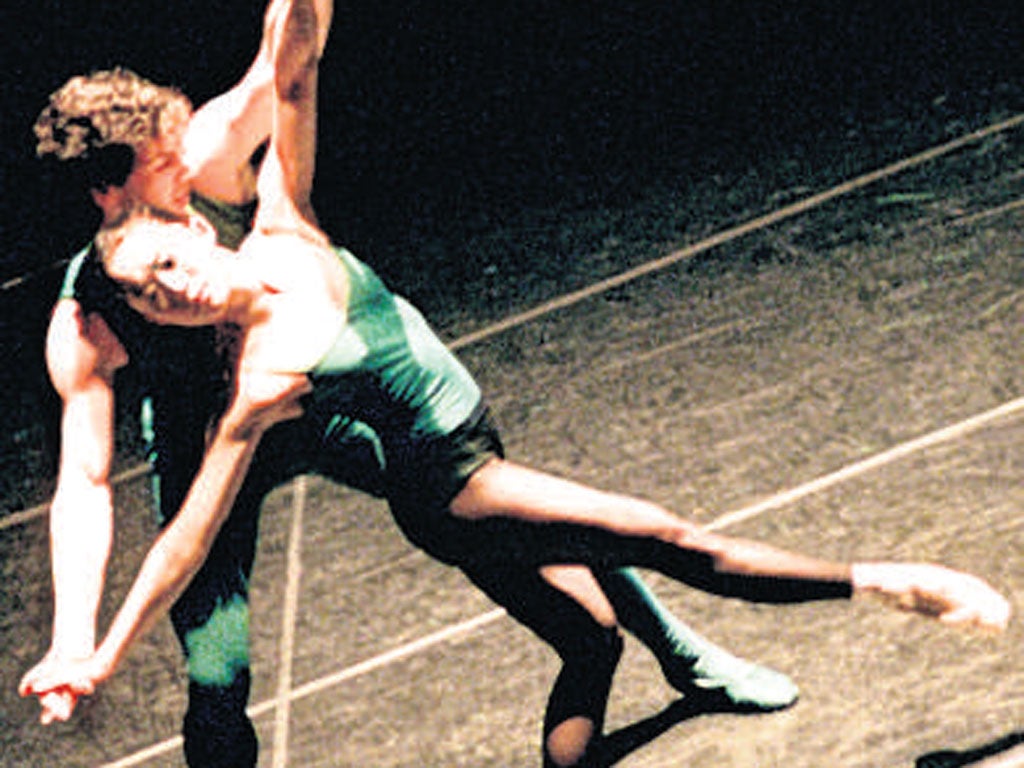Artifact/Royal Ballet of Flanders, Sadler's Wells, London
Brutal and brilliant, it's high time a British company got in on the action

Your support helps us to tell the story
From reproductive rights to climate change to Big Tech, The Independent is on the ground when the story is developing. Whether it's investigating the financials of Elon Musk's pro-Trump PAC or producing our latest documentary, 'The A Word', which shines a light on the American women fighting for reproductive rights, we know how important it is to parse out the facts from the messaging.
At such a critical moment in US history, we need reporters on the ground. Your donation allows us to keep sending journalists to speak to both sides of the story.
The Independent is trusted by Americans across the entire political spectrum. And unlike many other quality news outlets, we choose not to lock Americans out of our reporting and analysis with paywalls. We believe quality journalism should be available to everyone, paid for by those who can afford it.
Your support makes all the difference.Radical art, especially in live performance, can only be shocking once. Thereafter, it's a piece of history – interesting, bracing even, but a thing that no longer holds surprises.
A case in point is the shock factor of William Forsythe's early ballets, made when he was being paid to rattle the tooth fillings of Frankfurt ballet-goers stuck on a diet of Swan Lake. That brutalism has been widely copied and its force inevitably dimmed. The stripped-down stage, revealing all the technical gubbins, the house lights kept up after the show begins, the curtain that comes crashing down at apparently random moments, characters wandering around muttering to themselves: such things were more alarming 30 years ago.
But what emerges from Royal Ballet of Flanders' revival of Artifact, a major full-evening work from 1984, is not its shock value, but its classicism. For this is a ballet about ballet, a spectacular, savage deconstruction of the way traditional four-act ballet works in terms of grandeur, drama and expectation. It's also a work stuffed to the gills with smartly regimented steps.
"Step inside," coos a Vivienne Westwood lookalike in a powdered wig, billed as Character in Historical Costume. In typically cryptic fashion, this is both a formal welcome to Forsythe's late-20th-century world, and a signal of his intention to examine the base stuff of dance. First, though, we're introduced to the stooping, dithering, Character with Megaphone, who creeps about peering at the floor while mumbling about rocks and dust. He's clearly searching for something, which in Forsythe-speak means he's excavating the past. There's also a mysterious lone dancer painted all-over grey, who wafts through the proceedings like smoke.
"Can you see what I'm saying?" "Can you remember what I'm forgetting?" The nonsense dialogue rattles back and forth in the manner of Gertrude Stein – either heavy-handling of the theme of historic practice, or a clever undermining of ballet protocol – you take your pick. Whether irritating or amusing probably depends, as I say, on whether you've been here/done this before.
What's not at issue is Forsythe's magisterial marshalling of his forces, a vast corps of 30 dancer-clones, limbs whirring with factory-chiselled precision. But where in Giselle or La Bayadère are lines of white-tutued girls, here are Red Arrow formations of grass-green men, arms clench-fisted in a semaphored masculine code. Pas de deux become wrestling bouts, the woman periodically flaring into violent starbursts.
The concept is all Forsythe's – even the lighting, which alternately slices the dancers with vertical beams, reduces them to shadows or picks them out in a task-lamp glare. The music is crashing, elephantine live piano juxtaposed with a recording of Bach's Chaconne for solo violin – a piece so ubiquitous in Forsythe ballets that it's almost a shorthand for "music".
Artifact is a work that, as long as companies are prepared to tackle it, is certain one day to be called a classic. The pity is that the visiting Flanders troupe has given it so short a run. The good news is that Tamara Rojo, artistic director in waiting for English National Ballet (hurrah!), was in the Sadler's Wells audience with a curatorial glint in her eye. Now there would be a juicy challenge for ENB.
Critic's choice
Mention "dance" and "Cuba" and the word "hot" is bound to follow. Ballet Revolución, above, making its first UK appearance, is a combustive fusion of ballet, contemporary dance, hip hop and rumba from supremely fit Cuban dancers and a live band performing hits from Shakira, Ricky Martin and Beyoncé, among others. At London's Peacock Theatre (Wed to 19 May).
Join our commenting forum
Join thought-provoking conversations, follow other Independent readers and see their replies
Comments